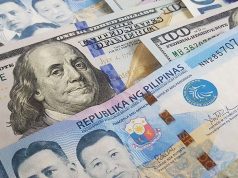Will we expect good growth performance of the agriculture sector in 2020?
The agriculture sector pulled up overall economic growth in the third quarter of this rather dismal year, 2020. Along with financial and insurance activities and public administration and defense, compulsory social activities, the sector grew by 1.2% last quarter. Meanwhile, the growth performance of industry and services remained negative, as in the second quarter.
The bad news is that the sector’s growth in the second quarter was higher at 1.6%. It was a good rebound from the negative growth of the sector in the first quarter, which was negative 0.3%. But will its performance thus far give us reason to expect growth of at least 1.5% in the sector?
The opportunity is there with the fourth quarter. Agriculture tends to have the largest quarterly contribution to its yearly value added. If the next quarter’s value added exceeds last years’ fourth quarter performance of P1.8 trillion at constant 2018 prices, the sector ends this year with a feather in its cap: the economic hero which pulled up overall economic growth in this cheerless year.
But it is unlikely and I hope I am wrong. Typhoons Rolly and Ulysses are likely to blow that feather away. On average from 2010 to 2019, crops have the largest share of the sector’s production at 2018 prices, and rice, the top industry of the sector, accounts for 21% of the sector’s total output.
The flooding caused by the two typhoons in the major rice growing areas, Central Luzon and Cagayan Valley, is bad news for the sector. Rice was the main reason for the quarterly peak of the sector’s value added in the last quarter. Our main rice harvest happens now, in this last quarter of the year.
Those typhoons that battered several parts of Luzon in the last two weeks will likely pull down the fourth quarter growth of the sector, and, for that matter, overall growth of the sector this year. Growth of the sector may still be in the positive range, but the sector’s growth rebound under the administration of Agriculture Secretary William Dar may be stymied by bad weather.
Aside from bad weather, another reason to be concerned is found in the livestock sector. Particularly made up of hogs and chicken, the sector accounts for about 15% of agriculture’s value added. The reason why the sector’s growth slowed down to 1.2% in the third quarter from 1.6% in the second quarter is that the production of hogs and poultry took a dive. Livestock production decreased by 7.6%. With a weight of 17.5% of total agricultural output in recent years, the hog industry exhibited a 7.7% drop of its output. Another heavyweight, poultry production, with a share of 14% of total output, contracted by 7.2% in the third quarter.
The poor performance is caused by the animal diseases which continue to linger in these sectors. If we recall, we had avian flu sometime in 2017 and authorities had to cull out hundreds of thousands of chickens to stop the spread of the disease. In addition, we have had African swine fever (ASF) since last year. The third quarter production of pigs is the lowest in a given year.
Hogs output tends to be highest in the fourth quarter. In 2018, the industry produced about P65.5 billion (this may include output of other livestock, but hogs account mainly for the livestock industry). The 2018 quarterly output was higher compared to 2017. Because of swine fever, the fourth quarter output in 2019 plunged to P59.8 billion, an 8.7% drop. Output recovered slightly in the first quarter this year, with growth of 1.5%. But pig mortality returned in the second quarter because of the lingering swine fever. Hog production dropped by 8.2% in the second quarter and by 7.7% in the third.
The industry is now in the fourth quarter, supposedly ready to deliver its typically best quarterly performance in any given year. It is unlikely that the industry’s value added this quarter will exceed last year’s last quarter. Negative growth in hog production and thus value added will add to the woes of the sector in 2020, already punished by extreme weather situations.
Poultry production (primarily broilers and layers) had contracted its value added in the third quarter. In 2019, about P28.5 billion were produced by the industry. This year it is P38.8 billion. Like hogs, production of poultry peaks in the fourth quarter. Last year, the industry’s value added reached a total of P54.2 billion. From a base of P38.8 billion, it is unlikely that the industry’s value added will exceed last year’s performance.
Hogs and poultry are two of the most dynamic industries of the agricultural sector. Hit by lingering animal diseases, the sector is deprived of a good source of growth. This highlights the importance of investing in food safety. Food safety, broadly defined as to keep our sources of food away from diseases and pests which reduce productivity, is food security and eventually better incomes for our country’s farmers.
Ramon L. Clarete is a professor at the University of the Philippines School of Economics.



